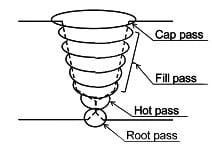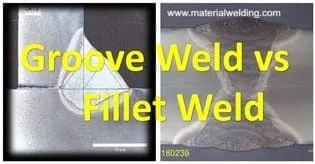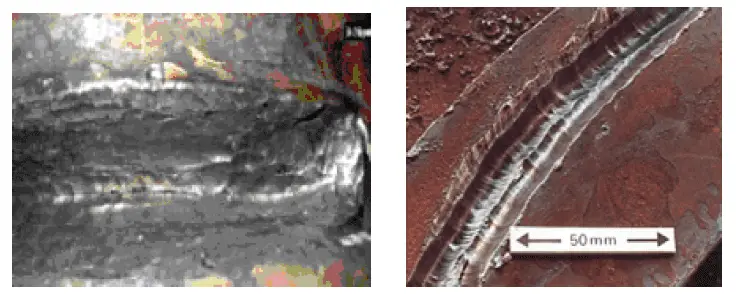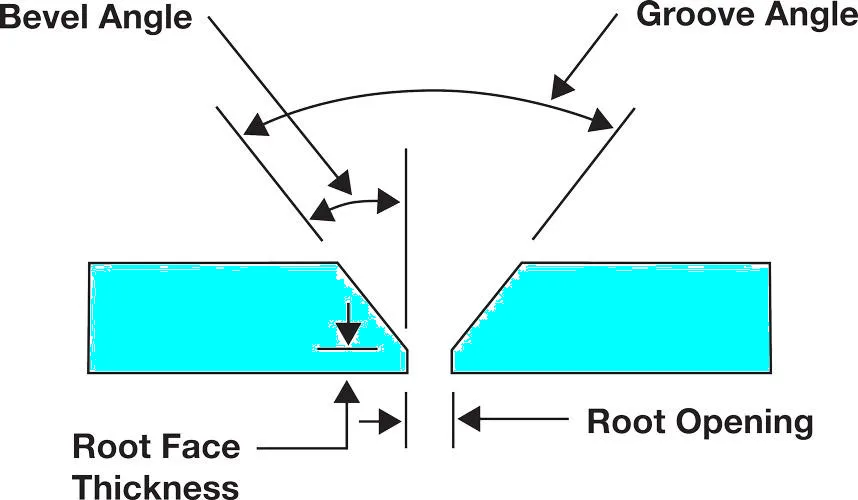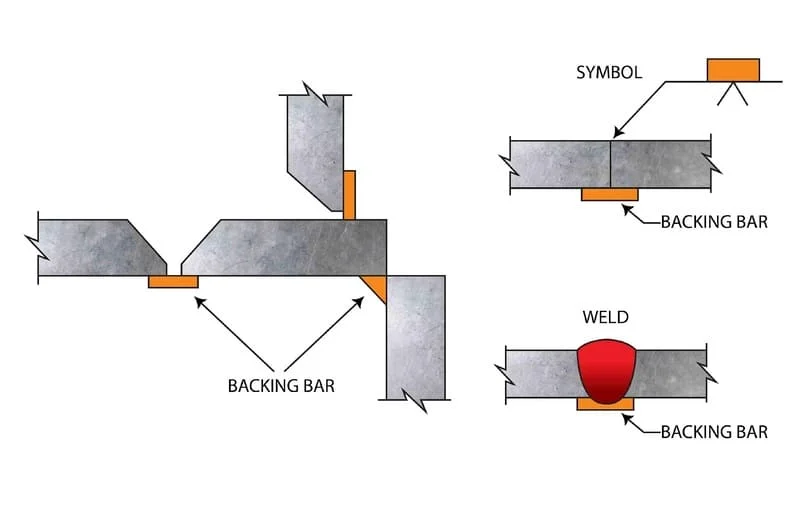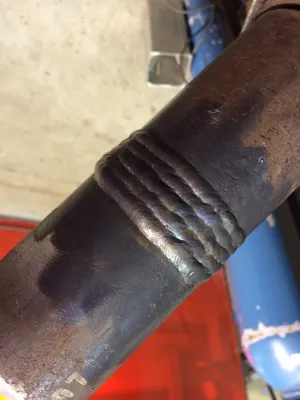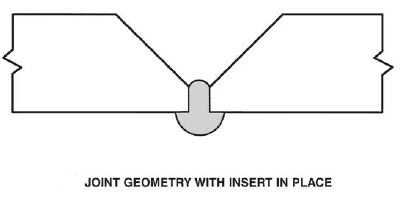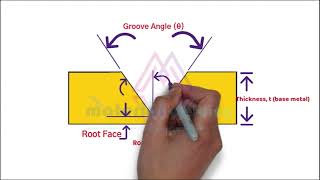The weld root is the area of the weld where the filler material first contacts the workpieces. The joining members are closest to each other at the Weld root in a welding joint.
The weld root is important because it provides backing support for the rest of the weld and helps to prevent cracking and burn-through.
The welding process can be difficult to control at the weld root, so it is important to have a good understanding of how welding works before attempting to weld root-level joints.
Root run is visible in a groove weld but in a fillet weld root is not visible. So, root run inspection can be made for groove weld joints but not for fillet welds.
To check root for fillet weld, they are subjected to destructive testing methods such as Macro test and fracture test.
Root welding is a process in which the root pass of a weld is made by welding the first pass on a Weld joint. Root weld is followed by hot pass welding.
Weld root Definition and meaning
Weld root is the bottom part of a weld where the metal surfaces are joined together. The weld root is typically the deepest part of the weld.
The weld root can be thought of as the foundation of the weld. A strong weld root is essential to a strong overall weld.
👉👉AWS Welding Symbol Chart (desk Size)👉👉
👉👉AWS Welding Symbol Chart (Wall Size)👉👉
Weld Root terms
Weld root composed of different areas to form a single root run welding. For example, in a groove weld, different parts of a welding root as listed below:
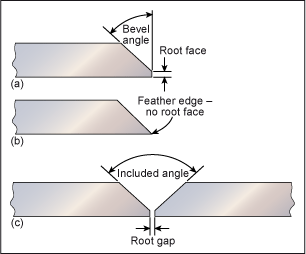
- Weld root Gap
- Weld root opening
- Weld Root face
- Weld Root Edge
- Weld root toe
Weld Root Gap
The root gap is the distance between the two joining members on root side. Root gap or also called root opening is the separation that is made between two plates or pipes at the weld root location.
It’s important to maintain a consistent root gap because it helps ensure penetration throughout the entire length of the weld. A proper root gap also helps prevent welding defects like incomplete fusion, porosity, and slag inclusions.
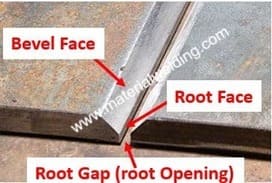
If the weld root gap is too large, it can cause problems with the weld bead. If the root gap is too small, the bead may not be able to penetrate the joint, which can lead to incomplete fusion.
Welding code and standards recommend a root gap of 1/16″ to 1/8’’ for most steel joints. However, the root gap can be as small as 0″ for some applications.
AWS D1.1 code provides recommended weld root dimensions for various weld joints configurations from Figure 5.1 and figure 5.2. Other references for recommended weld root gap, root face can be found in CSA W59, EN 1708 and EN15085-3 standards.
Weld Root Opening
Weld root opening (also called Root Gap) is one of the most important factors in welding. It is the space between the two pieces of metal being welded together.
If the root opening is too small, it can cause the weld to be too shallow and not penetrate the metal fully. This can lead to a weak or broken weld.
If the root opening is too large, it can cause the weld to be too deep and penetrate through the other side of the metal.
This can lead to a hole in the metal or a crack in the weld. The best way to avoid these problems is to make sure that the root opening is just right.
Root opening provide fabricator access for weld joint alignment and proper fitting. Root opening is usually larger when welding joint with a weld backing.
Weld Root Face
Weld root face is also called Land as a non-standard term. Weld root face is the portion of weld bevel that is kept significantly perpendicular to the joining member surface without any bevel on root side of the weld.
Weld root face can be zero to 2 -3 mm depending on the welding process type, material thickness and type of welding joint. Simply, large root face needs higher welding heat to fuse and used in submerged arc welding process. Smaller root face are used with TIG welding, stick welding and MIG welding.
The size and shape of the weld root face are determined by a number of factors, including welding process, electrode type, welding current, material thickness and type of welding joint.
The quality of the weld root face is important for both mechanical and aesthetic reasons. A poor quality weld root face can lead to premature failure of the joint, while an aesthetically pleasing weld root face can improve the overall appearance of the finished product.
Weld Root Edge
Root edge in welding means the welding joint configuration where root face has zero width. Weld root edge lies at the root side that is opposite to the weld face.
Weld root and Toe
Welding is a critical process in the fabrication of metal structures. The root and toe of a weld joint are the most important areas to examine when assessing the quality of a weld.
The root is the bottom part of the weld bead, where the two pieces of metal being joined come together. The toe is the point where the weld bead meets the base metal. These are the areas that are most likely to have defects, so it is important to inspect them carefully.
There are several NDT methods that can be used to inspect these areas, including X-ray, Ultrasonic, and Magnetic Particle testing. Each method has its advantages and disadvantages, so it is important to choose the right one for the job at hand.
Weld defects are often caused by improper welding techniques or poor quality materials. The root toe is especially vulnerable to these defects because it is not always possible to get a good weld bead in this area.
Weld Root Penetration Acceptance
Weld root penetration is an important factor to consider when welding. It is a measure of how deep the weld penetrates into the metal. The deeper the penetration, the stronger the weld will be in case of a fillet weld.
In a groove weld, root penetration must by beyond the material thickness but not more than 1/8’’ generally.
The acceptance for excessive weld root penetration is given in ISO 5817 and is given below for reference:
- For Quality Level B (Highest weld quality): h u 1 mm + 0,2 b,but max. 3 mm
- For Quality Level C (Intermediate weld quality): h u 1 mm + 0,6 b, but max. 4 mm
- For Quality Level D (Lowest weld quality): h u 1 mm + 1,0 b, but max. 5 mm
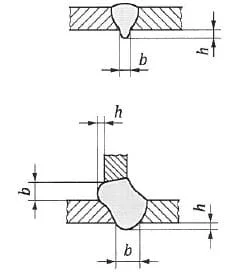
There are several factors that can affect weld root penetration, including welding speed, electrode type, and gas type.
When considering weld root penetration, it is important to keep in mind that there is no perfect depth. The goal is simply to have a deep enough weld to create a strong joint.
Too much penetration can actually weaken the weld, so it is important to find a balance. The best way to determine the optimal depth for your application is to experiment with different settings and variables.
Weld root penetration is a critical aspect of many welding applications, and therefore its acceptance is of utmost importance.
In general for a good quality weld its important to have:
- First, the depth of penetration must be within an acceptable range. Second, the weld bead should be evenly distributed around the circumference of the pipe. Finally, the overall appearance of the weld should be smooth and consistent.
- If all of these criteria are met, then it is safe to say that the weld root penetration is acceptable. Any deviations from these standards could result in an unacceptable weld which could lead to serious problems down the line.
Weld Root Concavity
Weld root concavity refers to the depression in the root of a weld. It is caused by the shrinking of the weld metal as it cools and contracts. Weld root concavity can be a problem if it is not properly controlled, as it can lead to cracking and other problems.
Weld root concavity acceptance is also given in ISO 5817 standard.
There are several ways to control weld root concavity, including proper welding techniques, using filler material, and preheating the metal. Proper welding techniques are the most important factor in preventing weld root concavity.
Using filler material can also help to filling in any voids that may form. Preheating the metal can help to prevent cracking by reducing the amount of contraction that occurs as the weld metal cools.
